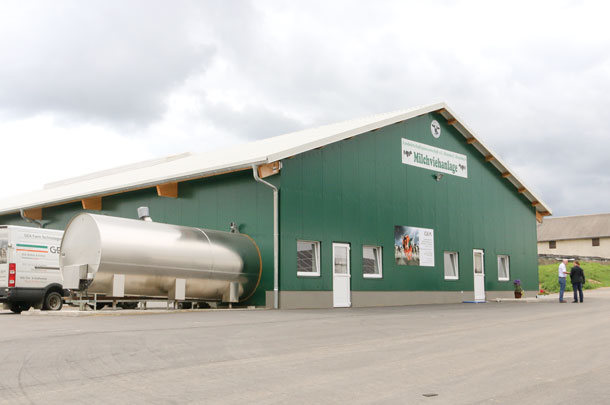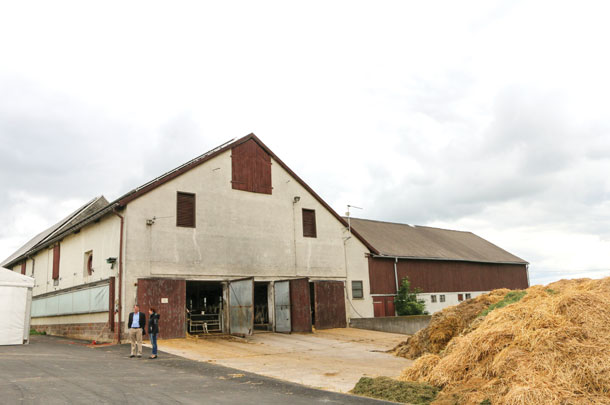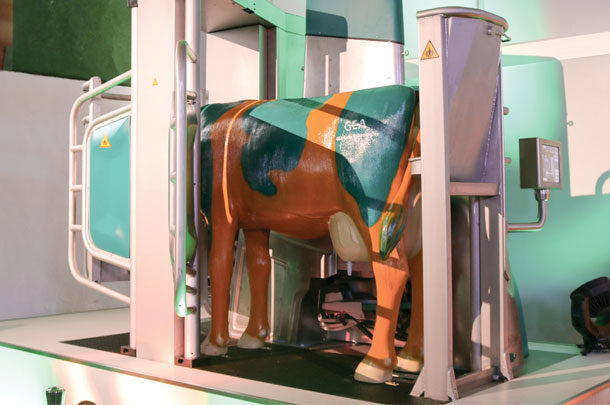This past June, I had the privilege of embarking on a tour of Germany with three other U.S. trade publication representatives, a marketing representative and a handful of GEA representatives to attend Dairy Summit 4.0, which was hosted by GEA.
In total, there were 130 people in attendance. Eighty of them were media from all over the world, and the rest were industry professionals. The purpose of the summit was to unveil the Monobox, the sponsoring company’s latest addition to its robotic milking series, and to show off its robotic rotary milking system – the DairyProQ.
The Monobox is not yet available in the U.S.; however, it is supposed to be by early 2016. It is geared toward small to midsize dairies. The DairyProQ, on the other hand, is designed for larger herds of at least 500 head.
At this point, this robotic system has only been installed on four farms in Germany, and two dairies in British Columbia, Canada, will have units by early 2016.
Similarities between Germany and the U.S.
With its green rolling hills and numerous trees, the landscape reminded me of parts of upstate New York – if you don’t count the large stone castles dotting the landscape. Although they grow some corn silage, haylage is the most commonly fed forage.
At 60 percent, Holsteins are the predominant dairy cattle breed. However, unlike the U.S., Simmental (a beef breed here) is the next most common, making up 25 percent of dairy cattle in the country. The remaining 15 percent is comprised of local dairy breeds, like Frisian.
German dairymen also face challenges with animal welfare and the gap between consumers and producers. German consumers also prefer the more picturesque, small grazing dairies.
 However, dairymen and university professors alike see the industry moving toward larger, more industrialized dairies in the coming years. They feel that is where the future is, especially now that the quota system is over, and they expect to see many dairies increasing the size of their herds over the next few years.
However, dairymen and university professors alike see the industry moving toward larger, more industrialized dairies in the coming years. They feel that is where the future is, especially now that the quota system is over, and they expect to see many dairies increasing the size of their herds over the next few years.
Waste management is another challenge for German dairy producers. They are not only limited in how they dispose of the manure but also in the amount of manure the dairy can produce. Mattresses as bedding are quite common. The problem is that they, in an effort to reduce manure, spread only a small amount of shavings over the top.
Differences between Germany and the U.S.
Our group spent most of its time in eastern Germany, which was formerly under Soviet control. A communism mindset still pervades agricultural businesses in this area. Having grown up in the U.S., where the entrepreneurial spirit is encouraged, I was startled by this.
I knew there would likely be remnants of the communist mindset in their actions, especially in the generations who had grown up during that time; however, it was far more apparent than I had expected.
For instance, one of the dairies we visited had been a collectivized farm when they were under Soviet control. At that time, people were not hired; the state assigned them a job. This particular dairy at one time had 900 workers for a 300-cow dairy. One person’s sole job had been to open and close the gate each day.
Now, to us, that kind of set-up might sound strange – and we might wonder why someone wouldn’t try to move up to a job that required more skill. However, in that system, as long as you showed up to work each day and checked off that box on the daily to-do list, you got your paycheck at the end of the month. Moving up was not an option, so they didn’t have any incentive to go above and beyond.
Although collectivized farms are now a thing of the past, that communist mentality has not fully left the system. Instead of an incentive-based system, it is a rule-based system where the outcome isn’t important. What is important is checking off a box on a list. In other words, it does not matter whether the change makes a positive impact on the animal’s well-being; what matters is that the dairy can check off one more box on their list.
 Automation is much more popular in Germany than it is in the U.S. – and has been for several years. Labor issues have been the predominant driving force behind this. Automated feeders for calves and robotic milking systems, which have only recently become popular in the U.S., have been popular for quite some time, making the country farm more automated than over here.
Automation is much more popular in Germany than it is in the U.S. – and has been for several years. Labor issues have been the predominant driving force behind this. Automated feeders for calves and robotic milking systems, which have only recently become popular in the U.S., have been popular for quite some time, making the country farm more automated than over here.
Some dairies even have automated feeders for their adult cattle, not just their wet calves. The system measures, mixes and distributes the TMR to the cattle all on its own, freeing the producer up to see to other tasks.
Although Soviet architecture is still common throughout eastern Germany, and many of the dairies use their old Soviet-style barns for raising their youngstock, Western-style barns are becoming more common as dairies expand and need new facilities.
However, one of the dairies we visited said they’ve had some trouble teaching the cows to lie in the freestalls. They have had more success with teaching the heifers, since they are not accustomed to the old bedded-pack barns.
On average, their cows are producing 29 kilos, or about 64 pounds of milk per day, which is fairly common for Germany. With continued innovation and better genetics, they are hoping to increase that number.
Looking forward
Now that quota in the European Union is gone, many German dairymen are planning to expand. However, that is not without its challenges, as land is expensive and some dairies do not have the option to buy more land. They too face challenges with consumer education, animal welfare and labor, and are devising innovative solutions to these issues. At this point, only time will tell how big of an impact Germany will have on the world market. PD
PHOTO 1: At the event, GEA revealed the latest addition to its robotic milking series, the Monobox. This product will likely be available in the U.S. early 2016.
PHOTO 2: Most German dairymen milk their cows twice a day; however, some of the larger dairies are considering milking three times a day.
PHOTO 3: Soviet-style barns are still common in Germany and are often used to house youngstock. Photos by Jenna Hurty.

-
Jenna Hurty
- Editor
- Progressive Dairyman
- Email Jenna Hurty







